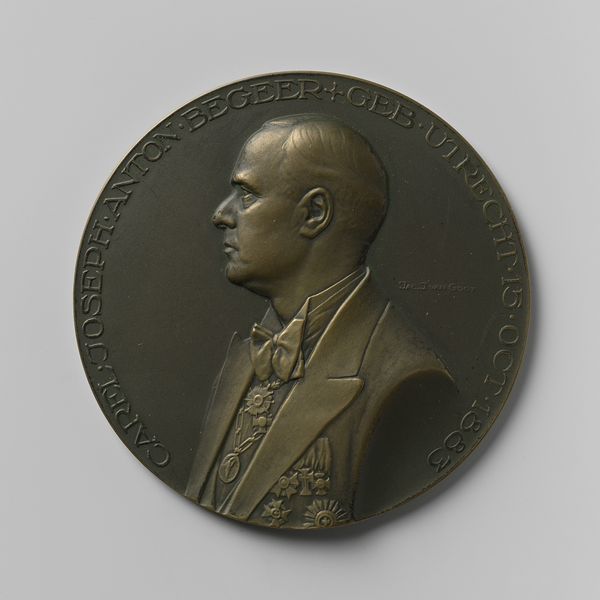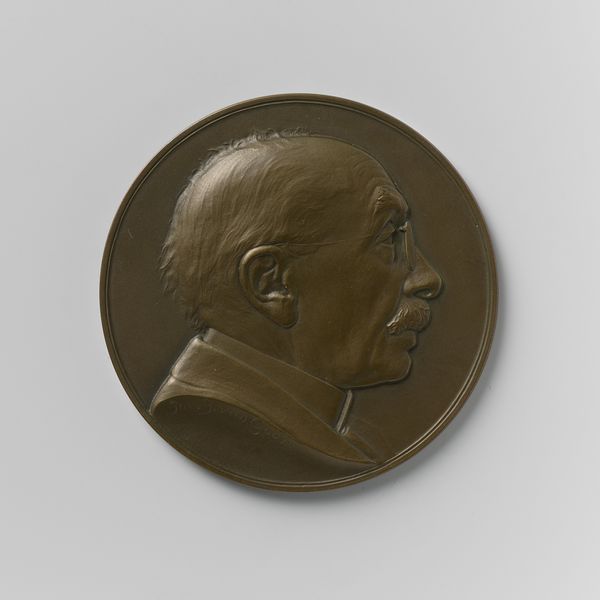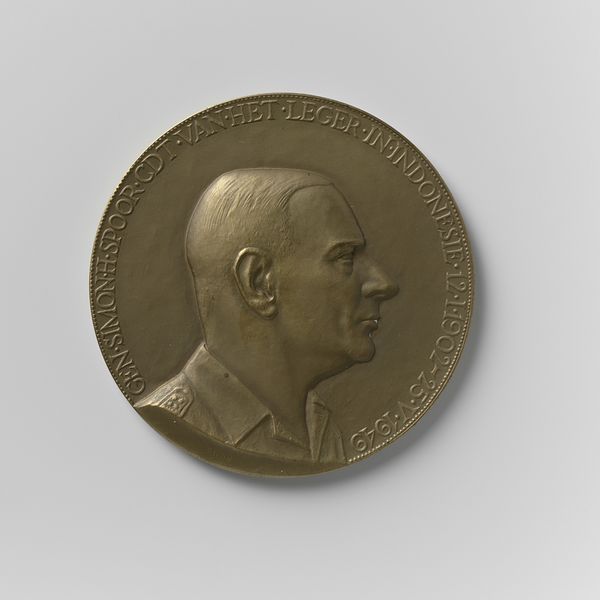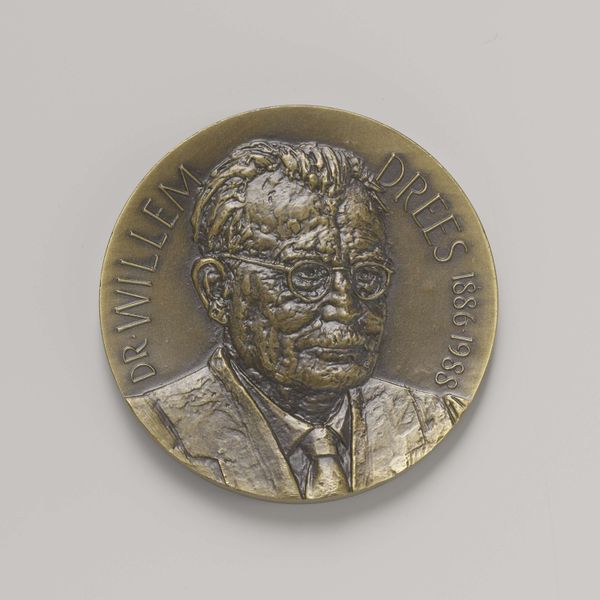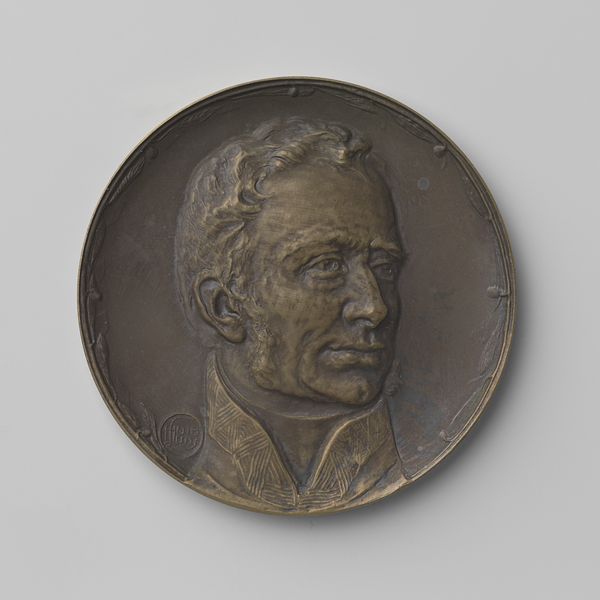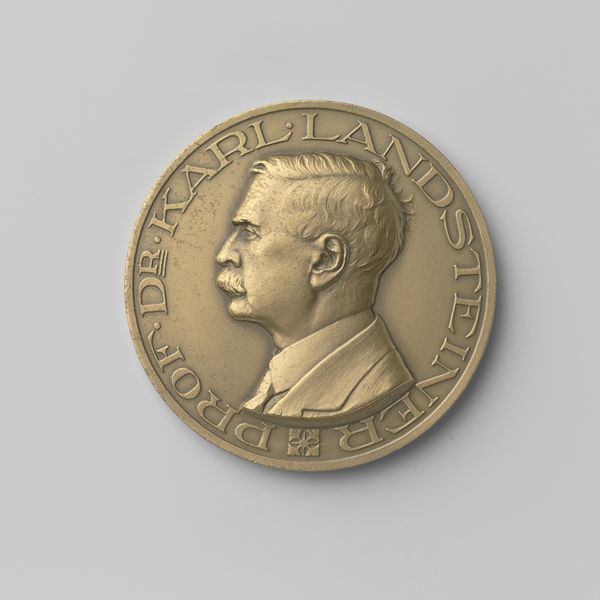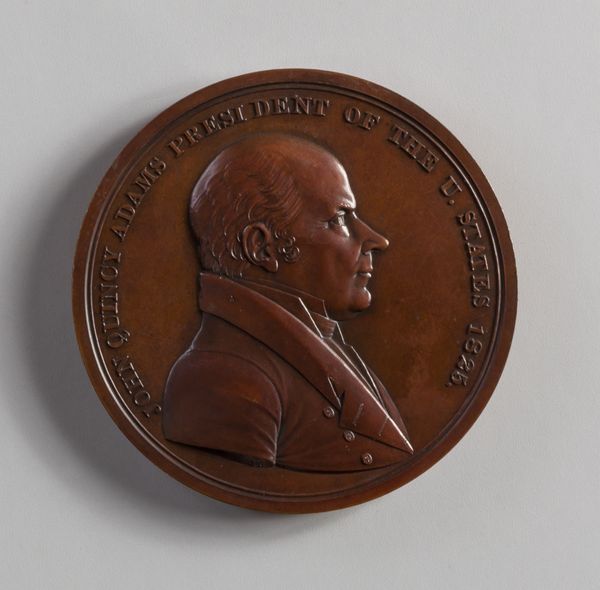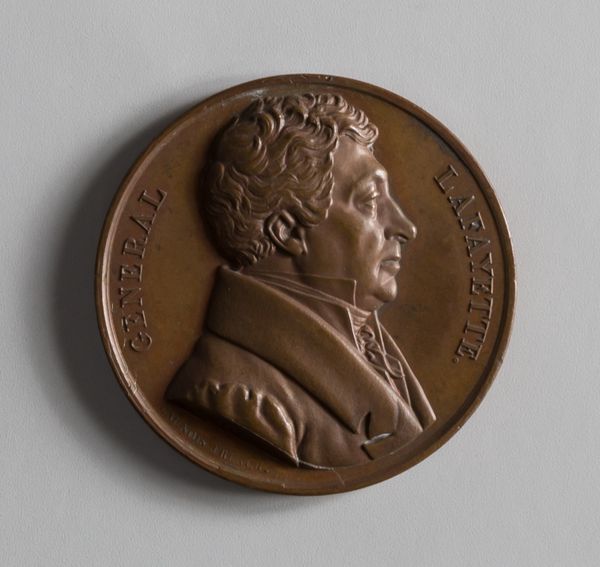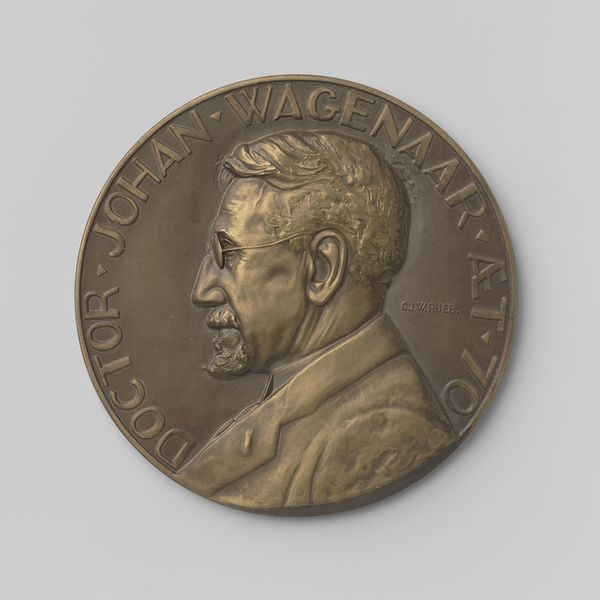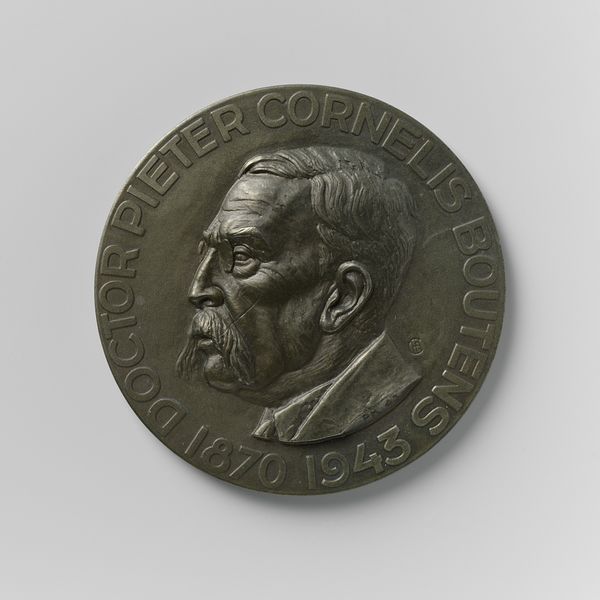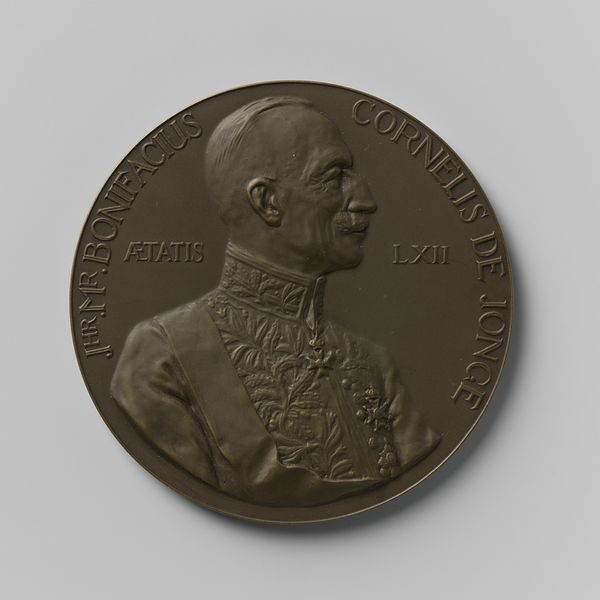
metal, bronze
#
portrait
#
metal
#
caricature
#
classical-realism
#
bronze
#
portrait drawing
Dimensions: diameter 6.0 cm, weight 81.78 gr
Copyright: Rijks Museum: Open Domain
Curator: Looking at this bronze piece, "J. Loudon op 71-jarige leeftijd 1937," created by Toon Dupuis in 1937 and held at the Rijksmuseum, my first impression is one of formal elegance. The use of bronze gives it a timeless, almost monumental quality despite its relatively small scale. Editor: The question of monumentality intrigues me. To whom do we grant the privilege of representation and commemoration, and through what power structures is that representation shaped? Was this commissioned, and what position did J. Loudon hold in society? Curator: Loudon was likely someone of significant status; portrait medals are typically commissioned for important figures. Notice how Dupuis uses subtle shifts in plane and light to capture the nuanced contours of Loudon's face, suggesting an air of distinguished intellect. Editor: While the execution may be technically proficient, I'm drawn to consider the work within the sociopolitical environment of 1937. The late 1930s were marked by rising nationalism and anxieties across Europe. How might Loudon, and this object, have been complicit within a larger system of power at that time? Curator: I appreciate you placing the work within its historical context. But let’s also consider Dupuis’ skill in the medium. Look at the crispness of the lettering and the way the artist has captured the textures, from the subtle wrinkles in Loudon’s face to the smooth fabric of his suit. It showcases an artist deeply skilled in formal conventions of portraiture. Editor: I'm just wary of celebrating these visual signifiers without unpacking who gets memorialized in this way. A critical approach must extend beyond purely aesthetic judgments. Whose stories are deemed important enough to cast in bronze, and whose are erased? How does an object like this normalize social hierarchies? Curator: Those are pertinent questions. Viewing it solely as a representation of an individual potentially misses the more substantial questions about privilege and historical narrative. Editor: Indeed. Examining how these objects operate within a complex web of historical and social forces ultimately reveals so much more.
Comments
No comments
Be the first to comment and join the conversation on the ultimate creative platform.
